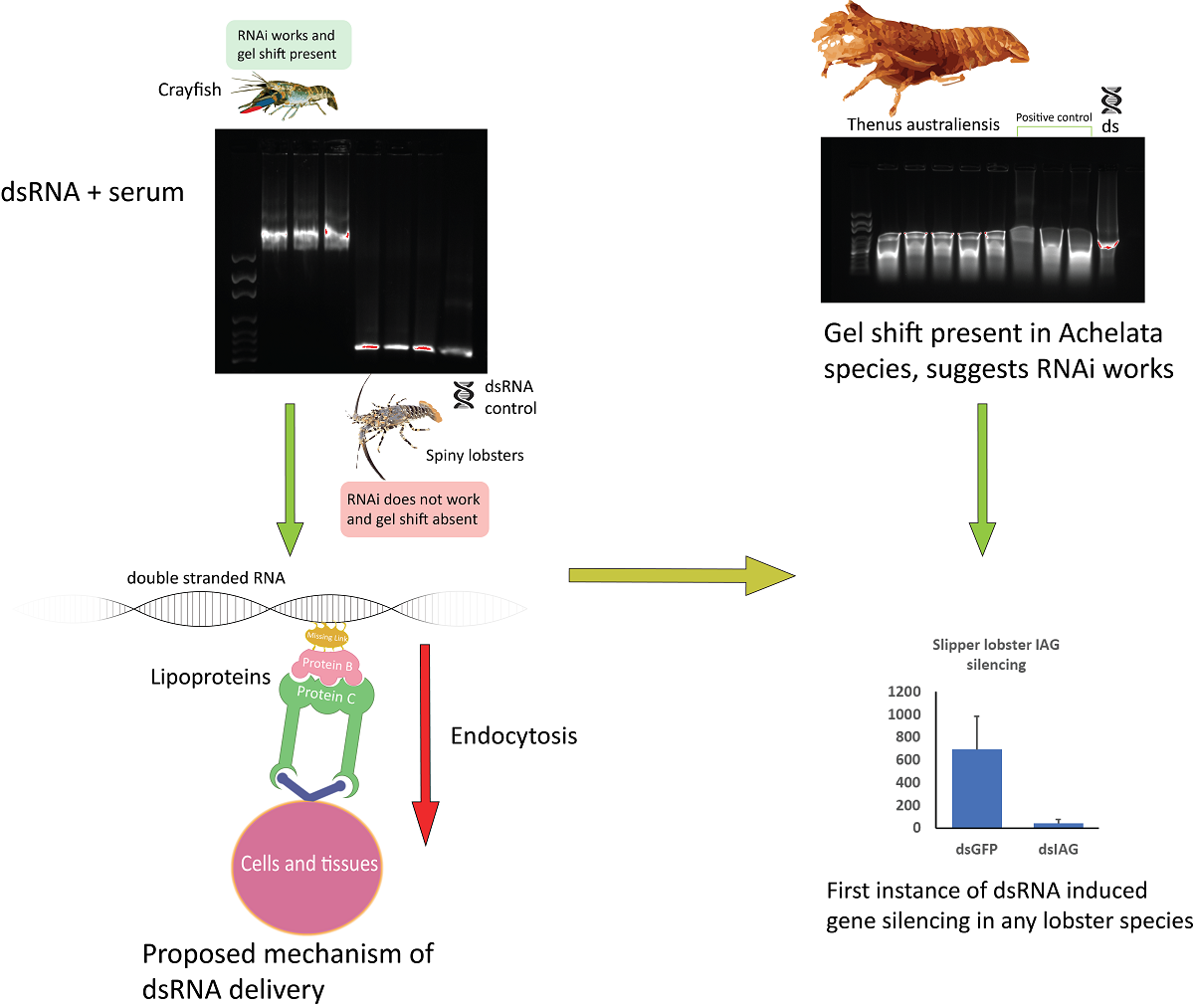RNA interference (RNAi) has become a widely utilised method to study gene function, yet despite this, many of the mechanisms surrounding RNAi remain elusive. The core RNAi machinery is relatively well understood, however many of the systemic mechanisms, particularly double stranded RNA (dsRNA) transport, are not. Here, we demonstrate that dsRNA binding proteins in the serum contribute to systemic RNAi, and may be the limiting factor in RNAi capacity for species such as spiny lobsters where gene silencing is not functional. Incubating serum from a variety of species across phyla with dsRNA led to a gel mobility shift in species where systemic RNAi has been observed, with this response being absent in species where systemic RNAi has never been observed. Proteomic analysis suggested lipoproteins may be responsible for this phenomenon, and may transport dsRNA to spread the RNAi signal systemically. Following this, we identified the same gel shift in the slipper lobster Thenus australiensis and subsequently silenced the insulin androgenic gland hormone, marking the first time RNAi has been performed in any lobster species. These results pave the way for inducing RNAi in spiny lobsters, and better understanding the mechanisms of systemic RNAi in Crustacea, as well as across phyla.

